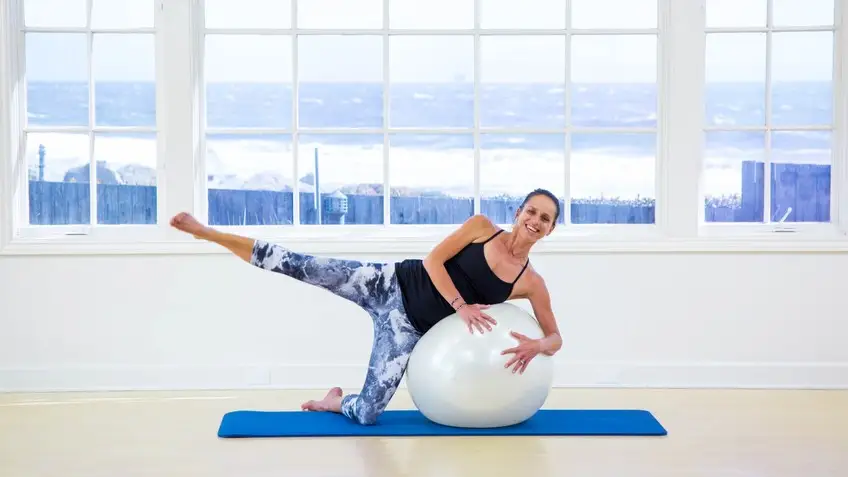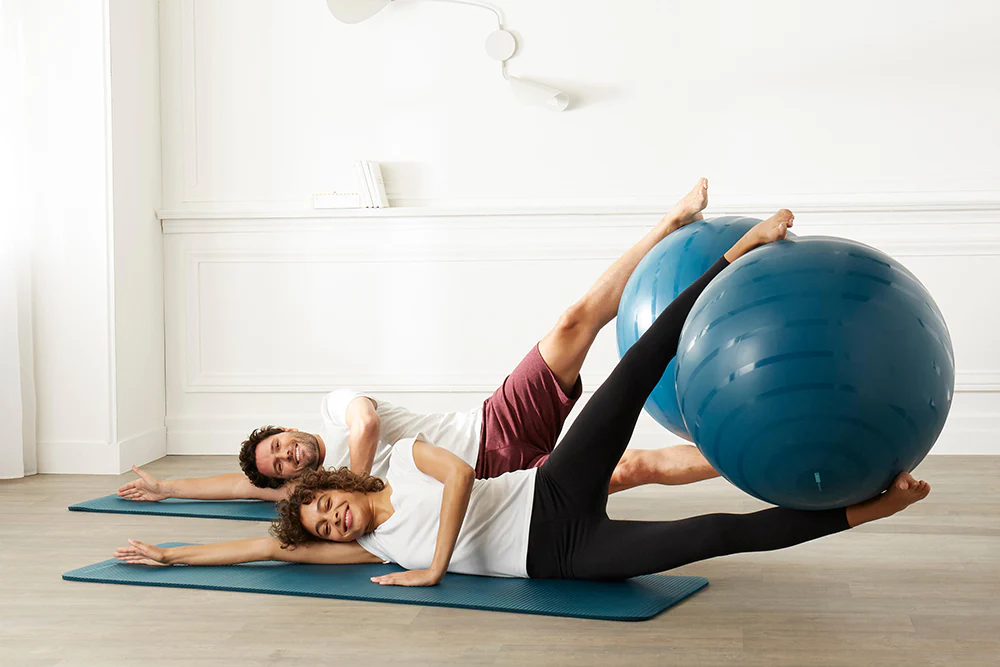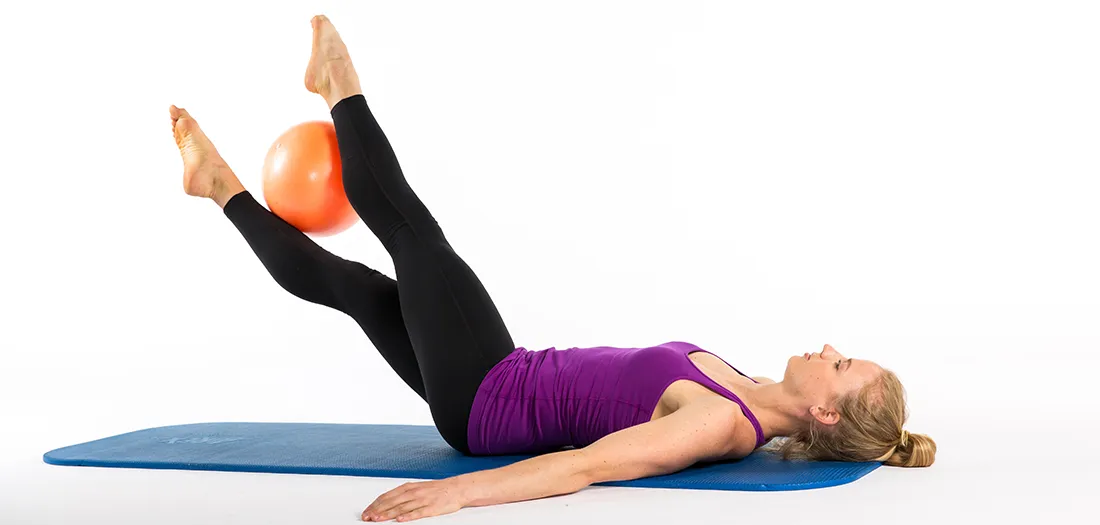In recent years, the popularity of Pilates has surged, with many individuals seeking effective ways to enhance their core strength from the comfort of their own homes. One essential tool that has emerged as a favourite among fitness enthusiasts is the Pilates ball. This versatile piece of equipment not only adds variety to workouts but also significantly enhances the effectiveness of core training. In this article, we will delve into the reasons why incorporating a Pilates ball into at-home core training is not just beneficial but essential.
Understanding Core Strength
Core strength refers to the stability and strength of the muscles in the abdomen, lower back, hips, and pelvis. These muscles are crucial for maintaining balance and proper posture, as well as for performing everyday activities. A strong core is fundamental not only for athletes but for anyone looking to improve their overall fitness and well-being.
The Importance of Core Training
Core training is vital for several reasons. Firstly, it helps to prevent injuries by providing support to the spine and reducing the risk of strain during physical activities. Secondly, a strong core enhances athletic performance, allowing for more powerful movements and improved endurance. Lastly, core training can significantly improve posture, which is particularly important in today’s sedentary lifestyle where many people spend hours sitting at desks. In addition to these physical benefits, core training can also contribute to better mental health. Engaging in regular core workouts can release endorphins, the body’s natural mood lifters, which may help alleviate stress and anxiety, promoting a more balanced state of mind.
Benefits of Using a Pilates Ball
Incorporating a Pilates ball into core training offers numerous advantages. The instability of the ball challenges the core muscles more than traditional exercises performed on a stable surface. This added challenge forces the body to engage more muscles, leading to improved strength and stability. Furthermore, the ball can be used in various exercises, making it a versatile addition to any home workout routine. Beyond its physical benefits, using a Pilates ball can also enhance proprioception, which is the body’s ability to sense its position in space. This heightened awareness can lead to better coordination and balance, essential skills not only for athletes but for anyone looking to navigate daily life with greater ease. Additionally, the playful nature of the ball can make workouts feel less monotonous, encouraging individuals to stay committed to their fitness journey and explore new movements with enthusiasm.
Enhancing Balance and Stability
One of the primary benefits of using a Pilates ball is its ability to enhance balance and stability. When performing exercises on the ball, the body must constantly adjust to maintain equilibrium, which activates stabilising muscles. This is particularly beneficial for individuals looking to improve their overall balance, which is crucial for athletic performance and daily activities. The dynamic nature of the ball forces the body to engage various muscle groups, leading to improved proprioception—the awareness of one’s body position in space. This heightened sense of body awareness can significantly contribute to better performance in sports and recreational activities, as well as reduce the risk of falls in older adults.
Exercises to Improve Balance
Several exercises can be performed using a Pilates ball to enhance balance. For instance, the ball can be used for seated exercises, where individuals sit on the ball and engage their core while maintaining balance. This not only strengthens the abdominal muscles but also encourages proper posture, which is essential for overall spinal health. Additionally, standing exercises, such as squats or lunges with the ball, can further challenge stability and coordination. Incorporating movements like single-leg balances or reaching exercises while on the ball can further engage the stabilising muscles, making the workout both challenging and effective. The versatility of the Pilates ball allows for a wide range of modifications, catering to various fitness levels and goals.
Rehabilitation and Injury Prevention
The Pilates ball is also a valuable tool for rehabilitation and injury prevention. Many physiotherapists recommend using the ball to strengthen core muscles after an injury, as it provides a safe and controlled environment for movement. The ball’s ability to support the body during exercises allows for a gradual return to strength without placing undue stress on injured areas. Moreover, the instability of the ball encourages the activation of smaller stabilising muscles that are often neglected in traditional strength training. This focus on comprehensive muscle engagement can lead to improved joint stability and overall functional movement patterns, which are crucial in preventing future injuries. By integrating Pilates ball exercises into a rehabilitation programme, individuals can not only recover more effectively but also build a stronger foundation for their physical activities moving forward.
Versatility of the Pilates Ball
The versatility of the Pilates ball makes it an essential piece of equipment for at-home core training. It can be used for a wide range of exercises, catering to different fitness levels and goals. Whether one is a beginner or an experienced athlete, there are countless ways to incorporate the ball into a workout routine.
Full-Body Workouts
While the primary focus of the Pilates ball is core training, it can also be used for full-body workouts. Exercises such as push-ups, planks, and even stretches can be performed on the ball, engaging multiple muscle groups simultaneously. This not only saves time but also maximises the effectiveness of each workout session. For instance, performing a push-up with hands on the ball not only challenges the chest and arms but also forces the core to stabilise, thereby enhancing overall strength and balance. Additionally, the instability of the ball requires greater engagement of the stabilising muscles, which can lead to improved coordination and functional fitness.
Customisable Workouts
The ability to customise workouts is another significant advantage of using a Pilates ball. Individuals can easily adjust the intensity of their exercises by changing their position on the ball or incorporating additional movements. This adaptability ensures that workouts remain challenging and engaging, preventing boredom and promoting consistency. For example, a simple exercise like the bridge can be modified by placing the feet on the ball, which increases the difficulty and targets the hamstrings and glutes more effectively. Moreover, the ball can be used in conjunction with other equipment, such as resistance bands or weights, further enhancing the variety and intensity of workouts. This flexibility allows users to tailor their fitness journey according to their personal preferences and progress, making it a truly versatile tool in any fitness arsenal.

Improving Posture and Alignment
Good posture is essential for overall health and well-being. Poor posture can lead to a range of issues, including back pain, muscle imbalances, and decreased mobility. The Pilates ball can play a crucial role in improving posture and alignment by promoting awareness of body positioning and encouraging the engagement of core muscles.
Posture-Correcting Exercises
Several exercises can be performed on the Pilates ball to promote better posture. For example, seated ball exercises encourage individuals to sit up straight and engage their core, reinforcing proper alignment. Additionally, exercises that focus on extending the spine, such as back extensions on the ball, can help counteract the effects of prolonged sitting and improve overall posture.
Mind-Body Connection
Using a Pilates ball also encourages a stronger mind-body connection. The need to maintain balance and control during exercises fosters greater awareness of body movements and alignment. This heightened awareness can translate to improved posture in daily life, as individuals become more conscious of their body positioning throughout the day.
Incorporating the Pilates Ball into Your Routine
Integrating the Pilates ball into an at-home core training routine is straightforward and can be done in various ways. Whether through dedicated Pilates sessions or as part of a broader fitness programme, the ball can enhance workouts and provide new challenges.
Creating a Balanced Routine
To create a balanced routine, individuals should aim to incorporate a mix of exercises that target different muscle groups. For instance, combining core exercises with strength training and flexibility work can lead to a well-rounded fitness regimen. The Pilates ball can be seamlessly integrated into each of these components, ensuring a comprehensive approach to fitness.
Setting Realistic Goals
When incorporating a Pilates ball into a workout routine, it is essential to set realistic and achievable goals. This could involve gradually increasing the difficulty of exercises, aiming for a certain number of repetitions, or focusing on mastering specific movements. By setting clear goals, individuals can track their progress and stay motivated on their fitness journey.
Safety Considerations
While the Pilates ball is a fantastic tool for core training, safety should always be a priority. Proper usage and technique are crucial to prevent injuries and ensure effective workouts. Here are some key safety considerations to keep in mind.
Choosing the Right Size Ball
The size of the Pilates ball is important for ensuring comfort and effectiveness during workouts. It is essential to choose a ball that is appropriate for one’s height. Generally, individuals between 5’0″ and 5’5″ should use a 55cm ball, while those between 5’6″ and 6’0″ should opt for a 65cm ball. Taller individuals may require a 75cm ball. Using the correct size will help maintain proper alignment and reduce the risk of injury.
Maintaining Proper Form
Maintaining proper form during exercises is crucial for maximising benefits and minimising the risk of injury. It is advisable to focus on engaging the core and maintaining control throughout each movement. If unsure about proper technique, seeking guidance from a qualified instructor or utilising online resources can be beneficial.

Conclusion
Incorporating a Pilates ball into at-home core training is not just a trend; it is a practical and effective strategy for enhancing core strength, stability, and overall fitness. Its versatility, ability to improve posture, and suitability for various fitness levels make it an essential tool for anyone looking to elevate their workout routine. By understanding the benefits and implementing safe practices, individuals can unlock the full potential of their Pilates ball, leading to a stronger core and improved well-being.
Whether one is a seasoned fitness enthusiast or a beginner, the Pilates ball offers an engaging and dynamic way to enhance core training at home. Embracing this versatile tool can lead to significant improvements in strength, balance, and overall health, making it an invaluable addition to any fitness regimen.
See Also: 5 effective ways to use a small Pilates Ball for balance work.


Leave a Reply